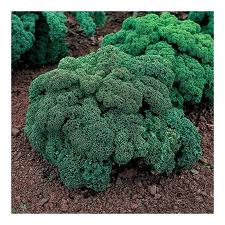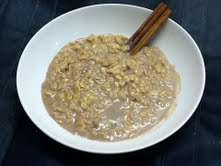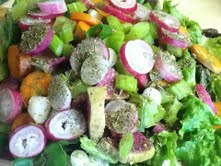I'm all for local eating. But another endeavor I enjoy is helping other cultures find worthwhile products to produce that encourage preservation of the rainforest and farming of products other than coca. So I was excited to see the country of Peru have such a beautiful and informational pavilion at Expo West.
We all know about quinoa and I've written about purple corn…here are some other foods you might be seeing more of that could be fun to try!

Maca Most of us think of maca as a supplement to enhance sexual prowess. It's actually been studied in the laboratory and been found to enhance libido and semen quality. It may also help alleviate sexual dysfunction related to antidepressant use. It may also help reduce enlarged prostate glands.
That being said, Americans have a really bad habit of taking something they think is"good", grinding it up, concentrating it, and using it in larger quantities than would be possible in nature. In this case, there is some thought that excessive maca consumption may negatively affect thyroid function. In addition, there are several varieties of maca, and only the red was found to have significant hormonal effect. Labeling on supplements may not contain this information and you may be wasting your money.
Bottom line, if you see it on a restaurant menu or a fun international market, take it home and cook it like a turnip! Be careful, however, about the supplement version.

Amaranth Gluten-free enthusiasts love this grain, but like quinoa, it's not actually a grain…it's a seed. It can be toasted and eaten like popcorn, or cooked like a grain. Here is more information on how to use amaranth in your kitchen. In other parts of the world, such as Asia and Africa, amaranth leaves and roots are also culinary specialties.
Regular consumption of amaranth seed may help regulate hypertension and cholesterol, and the leaves and roots are very high in vitamins and minerals, including calcium, iron, magnesium, phosphorous, potassium, zinc, copper, and manganese.
Both Bob's Red Mill and Arrowhead Mills sell amaranth flour, but if you can't find it in your store, here are amaranth options on amazon.com.

Aguaymanto This fruit is related to one of my local favorites, the tomatillo (you can see the similar husks in the photo). It is currently being researched for its potential as an antioxidant source, and it has been found to contain melatonin.
Locals like to use it in jams, syrups, and pastries, but it is also seen in fruit salads and salsas.

Lucuma, or eggfruit, if you Google it, will pop up quite frequently as the next big superfood, and ground powders are available online. (As with maca, I am not providing links, as I am not telling you about these foods to encourage a superfood or supplement mentality.) This fruit tree can grow in warmer US climates such as Florida or Arizona. It's a Peruvian favorite, as illustrated by the blog Peru Food. It is described as tasting a little bit like maple syrup ice cream.
It is a favorite of raw food enthusiasts. They promote it as low-glycemic, though I was not able to find the actual scientific reference for it in my search; most references circle back to the same video. If anyone out there can direct me to that, I'm happy to post for everyone.
Nutritionally, lucuma is high in fiber, iron, and as you might guess from its beautiful color, beta carotene.

Sacha Inchi, or the Peruvian peanut, comes from the rainforest. I actually tried this at Expo West; it was prepared like corn nuts and there was also a version coated with fair-trade chocolate (isn't that the best way to get Americans to try anything new and different?) It's pretty high protein, and it contains ALA, the vegan omega-3 fatty acid. (With respect to the omega-3's it's an option to flaxseed.) In Peru, its oil is used for cooking so I imagine some day it will show up in US markets as well.
Again, American marketing reps are trying to capitalize on the superfood craze when selling this food. It's fine to eat, and its nutritional value is nice, but no need to abandon everything else you're doing for it. Try it when you can, enjoy it when you find it, and know it fits well into a hormone-friendly lifestyle.
One of the reasons I put this blog post together is to illustrate why closing out food choices can deny you some food fun, not to mention nutrition! If you're locked into a top ten list of foods, you may miss some great culinary experiences…that can be healthy as well! Sometimes when you're focused on"fixing" a disease it can take the fun out of food. The more enjoyable it is, the more likely it is you'll have a healthy relationship with it. Every culture has its gems, even if they're not salmon, blueberries, and broccoli!
I admit, I had a personal reason for writing this blog post. My Peruvian friend Denise has told me she wants to share her favorite local Peruvian restaurant with me sometime soon. I wanted to be sure I knew what I would be seeing when I looked at the menu. Now that I've done my homework, I'm hungry and looking forward to what the menu has in store.
Gonzales GF, Miranda S, Nieto J, Fernández G, Yucra S, Rubio J, Yi P, and Gasco M. Red maca (Lepidium meyenii) reduced prostate size in rats. Reprod Biol Endocrinol. 2005; 3: 5.
Dording CM. Fisher L. Papakostas G. Farabaugh A. Sonawalla S. Fava M. Mischoulon D. A double-blind, randomized, pilot dose-finding study of maca root (L. meyenii) for the management of SSRI-induced sexual dysfunction.
Czerwiński J, Bartnikowska E, Leontowicz H, et al. Oat (Avena sativa L.) and amaranth (Amaranthus hypochondriacus) meals positively affect plasma lipid profile in rats fed cholesterol-containing diets". J. Nutr. Biochem. 15 (10): 622–9, 2004.
Wu, SJ; Tsai JY, Chang SP, Lin DL, Wang SS, Huang SN, Ng LT (2006). Supercritical carbon dioxide extract exhibits enhanced antioxidant and anti-inflammatory activities of Pysalis peruviana. J Ethnopharmacol 108 (3): 407–13
Kolar J., Malbeck J. Levels of the antioxidant melatonin in fruits of edible berry species. Planta Medica 2009 75:9






















